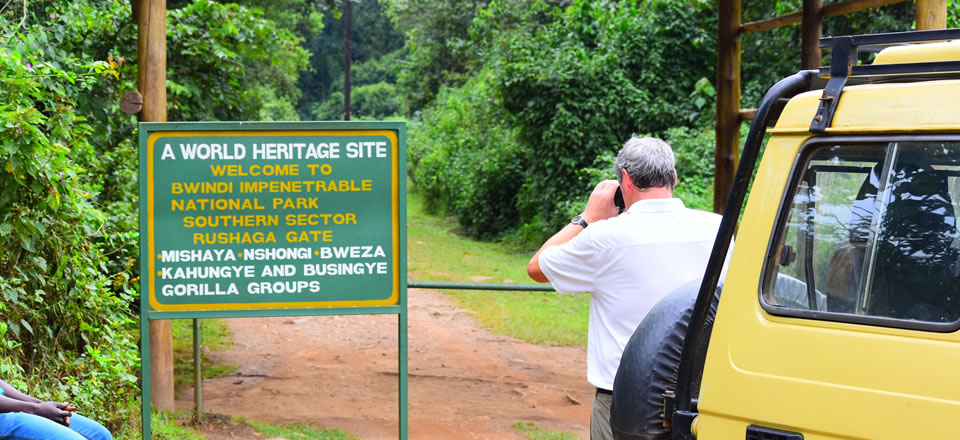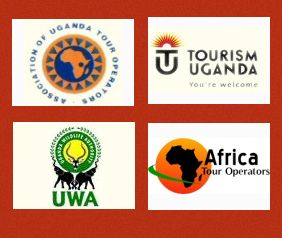Gorilla Trekking: 9 Tips for unforgettable trips
 Welcome to the world of Gorilla Trekking! If you’re planning a trip to see these magnificent creatures, then you’re in for a treat. Gorilla trekking requires a great deal of planning and preparation to ensure an unforgettable experience. With our tips for unforgettable trips, we hope to provide you with the ultimate guide to an amazing wildlife adventure. From the best time to go to what to wear and what to expect, our 10 tips will give you all the information you need to trek with the gorillas safely and responsibly. So, let’s dive in and explore the world of gorilla trekking!
Welcome to the world of Gorilla Trekking! If you’re planning a trip to see these magnificent creatures, then you’re in for a treat. Gorilla trekking requires a great deal of planning and preparation to ensure an unforgettable experience. With our tips for unforgettable trips, we hope to provide you with the ultimate guide to an amazing wildlife adventure. From the best time to go to what to wear and what to expect, our 10 tips will give you all the information you need to trek with the gorillas safely and responsibly. So, let’s dive in and explore the world of gorilla trekking!
1. The Importance of Conservation
Gorilla trekking not only provides tourists with a once-in-a-lifetime experience, but it also plays a crucial role in the conservation of this endangered species. The money generated from gorilla permits, tourism activities, and park fees goes towards protecting the gorilla habitat, anti-poaching efforts, and community development projects. So when you go gorilla trekking, you’re not just fulfilling your own desires; you’re also contributing to the conservation of these magnificent creatures.
2. Indigenous Communities
The indigenous communities that live around the gorilla trekking parks play a significant role in the conservation of the gorillas. When visiting these communities, you get to learn about their way of life, traditional cultures, and how they interact with the gorillas. Participating in community-based tourism activities or buying local handicrafts is a great way to support community development projects and provide employment opportunities for the locals.
3. Health Precautions
Gorillas are susceptible to human diseases, so before embarking on your gorilla trekking adventure, ensure that you’re in good health. Visitors are required to wear face masks to minimize the risk of transmitting diseases. Additionally, when you have a cough or flu, you’re advised to reschedule your trip to protect the gorillas’ health.
4. Gorilla Etiquette
While Trekking with gorillas, it’s essential to abide by the gorilla rules to ensure a memorable experience. Keep a distance of 7 metres from the gorillas; don’t touch the gorillas; don’t use flashes when taking photos; and avoid making loud noises. Following these guidelines helps the gorillas feel comfortable around humans, allowing for a more enjoyable viewing experience.
5. Trekking Duration
Gorilla trekking could last anywhere from 30 minutes to 8 hours, depending on the gorilla’s location on that day. It is advisable to be physically fit and mentally prepared for the trek. It’s also recommended to carry enough water, a packed lunch, and snacks, especially for long hikes.
6. Gorilla Trekking Gear
Clothing for Gorilla trekking must be durable, comfortable, and practical. Heat, rain, cold, and insects are all factors to consider when selecting gorilla trekking gear. Wearing solid hiking boots, long-sleeved shirts and pants, and waterproof clothing can help make the trek more comfortable.
7. The Cost
Gorilla trekking comes at a cost, with permits and park fees ranging from $500 to $1,500 per person. The fee covers the cost of a park ranger, anti-poaching efforts, and community development. While it may seem pricey, the experience of being in the presence of the gorillas is priceless.
8. Climate and Weather
Gorilla trekking can happen throughout the year, but the best time to go varies based on the season. However, the wet season is typically from March through May and September through November, where the terrain may be more challenging but the gorillas tend to be at lower altitudes.
9. Wildlife Beyond Gorillas
If trekking with gorillas is part of your wildlife itinerary, then you can consider adding other animal activities like chimpanzee tracking, birding, and safari experiences. Uganda and Rwanda are home to numerous wildlife parks, which offer an excellent opportunity to explore the different wildlife species in their natural habitats.
Gorilla trekking is an adventure worth experiencing, but it’s important to do it responsibly and sustainably. Remember to follow the gorilla rules, respect the indigenous communities’ way of life, and help protect their habitats. Plan and prepare adequately for your trek, and you’ll come back with lifelong memories of these incredible creatures in their natural habitat.

